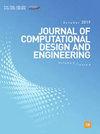基于数据挖掘的公寓房屋移交后缺陷关联规则识别
IF 6.1
2区 工程技术
Q1 COMPUTER SCIENCE, INTERDISCIPLINARY APPLICATIONS
引用次数: 0
摘要
随着客户的期望越来越高,建筑环境越来越复杂,物业管理团队面临着不断的压力,需要有效地管理和纠正楼宇的缺陷,以提高楼宇的运作效率和表现。本研究旨在为项目和物业管理专业人员开发和验证缺陷相关性评估模型,具体方法是:(i)检查住宅建筑的缺陷检测和管理机制,以及(ii)通过使用关联规则挖掘(ARM)技术量化缺陷的力学特征。为了解决当前评估方法的局限性,本研究提出了一个ARM评估模型,该模型将构建缺陷集成到工作类型、位置、元素和缺陷类型中。这些分类之间的联系被探索和绘制。在产生的123条有意义的规则中,规则在链接的工作类型中出现相同工作类型的比例约为62%,在另一个元素中出现相同元素的比例约为193%,在远位置中出现近位置的比例约为23%。总之,本研究让项目和物业管理专业人员了解了不同特征缺陷之间的关键和复杂联系,并突出了住宅公寓建筑中最常见的缺陷。因此,这有助于减少缺陷管理中优先级的模糊性和主观性,并促进维护和修复计划。本文章由计算机程序翻译,如有差异,请以英文原文为准。
Data-mining-based identification of post-handover defect association rules in apartment housings
With the increasing expectations of clients and the growing complexity of the built environment, property management teams are facing constant pressure to effectively manage and rectify defects for improved building operational efficiency and performance. This study aims to develop and validate a defect correlation evaluation model for project and property management professionals by specifically (i) examining the defect detection and management mechanisms of residential buildings and (ii) quantifying the mechanical characteristics of defects by using association rules mining (ARM) techniques. In addressing the limitations of current evaluation approaches, this study proposed an ARM evaluation model that integrated, contextualized, and operationalized building defects into work type, location, elements, and defect type. The association between these classifications was explored and mapped. Among the resulting 123 meaningful rules, rules occurred at a rate of about 62% of the same work type in the linked work type, nearly 193% of the same element in another element, and about 23% of the close location in the far location. In conclusion, this study informs project and property management professionals of the key and complex associations between defects of different characteristics and highlights the most common occurrence defects in residential apartment buildings. Thus, this helps reduce the ambiguity and subjectivity of prioritization in defect management and facilitates maintenance and repair planning.
求助全文
通过发布文献求助,成功后即可免费获取论文全文。
去求助
来源期刊

Journal of Computational Design and Engineering
Computer Science-Human-Computer Interaction
CiteScore
7.70
自引率
20.40%
发文量
125
期刊介绍:
Journal of Computational Design and Engineering is an international journal that aims to provide academia and industry with a venue for rapid publication of research papers reporting innovative computational methods and applications to achieve a major breakthrough, practical improvements, and bold new research directions within a wide range of design and engineering:
• Theory and its progress in computational advancement for design and engineering
• Development of computational framework to support large scale design and engineering
• Interaction issues among human, designed artifacts, and systems
• Knowledge-intensive technologies for intelligent and sustainable systems
• Emerging technology and convergence of technology fields presented with convincing design examples
• Educational issues for academia, practitioners, and future generation
• Proposal on new research directions as well as survey and retrospectives on mature field.
 求助内容:
求助内容: 应助结果提醒方式:
应助结果提醒方式:


